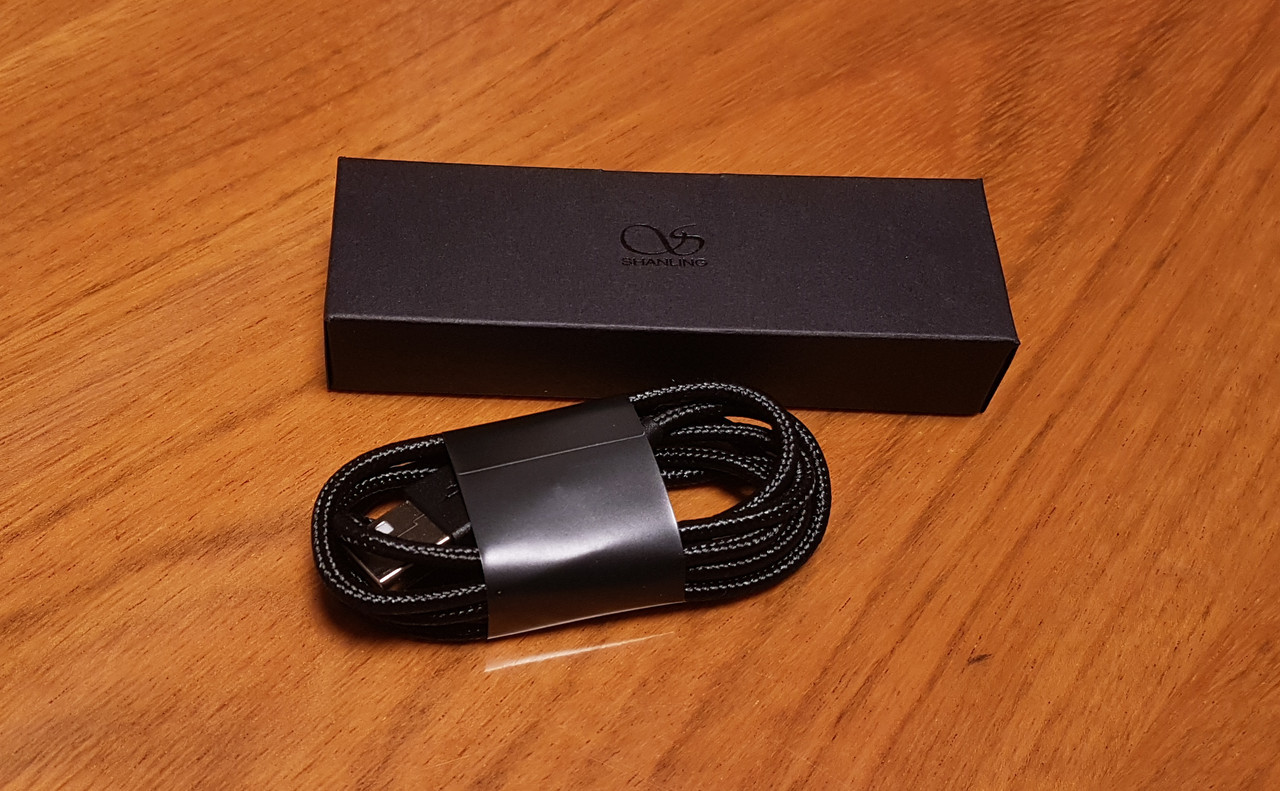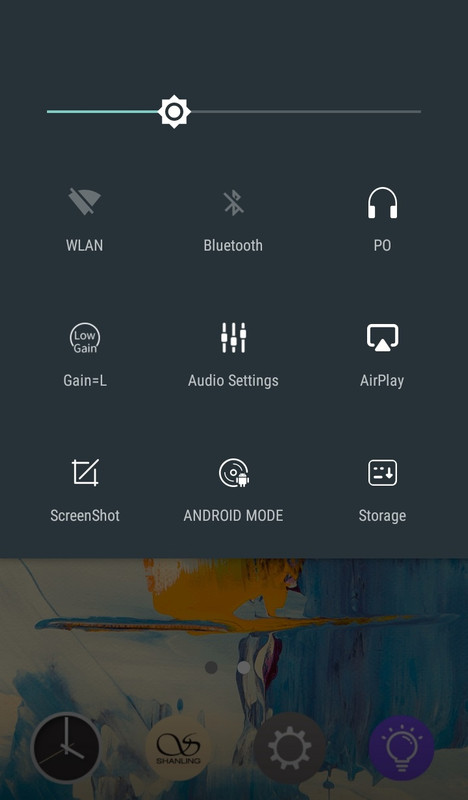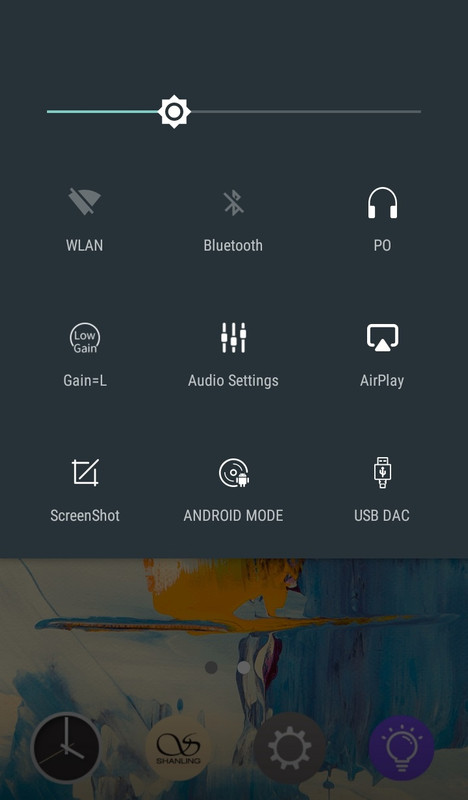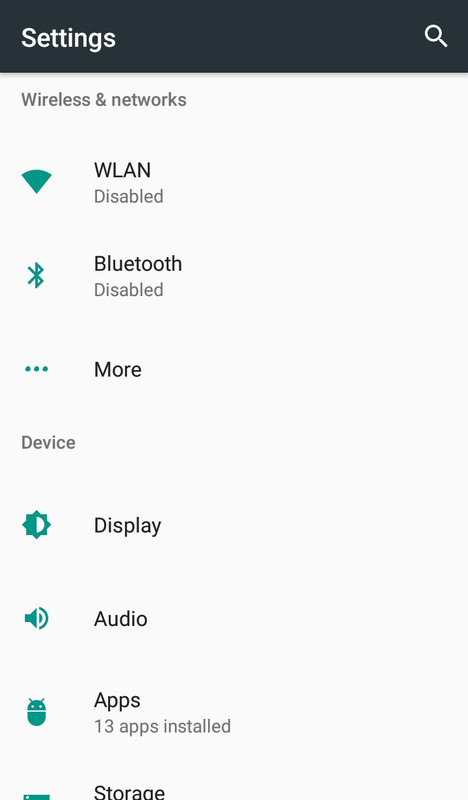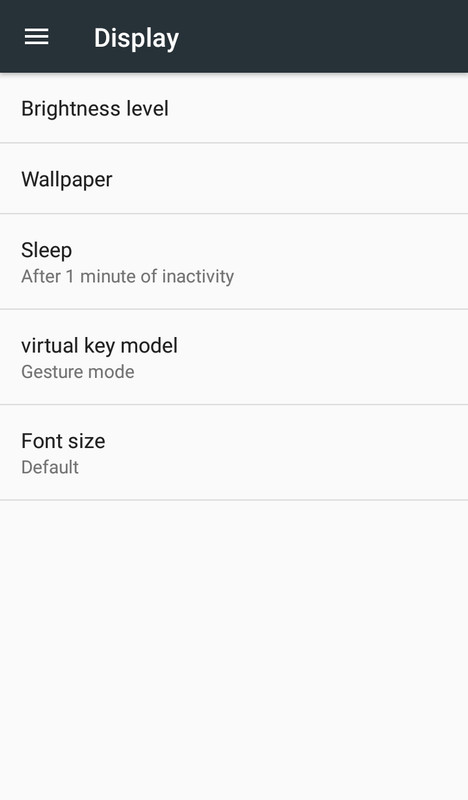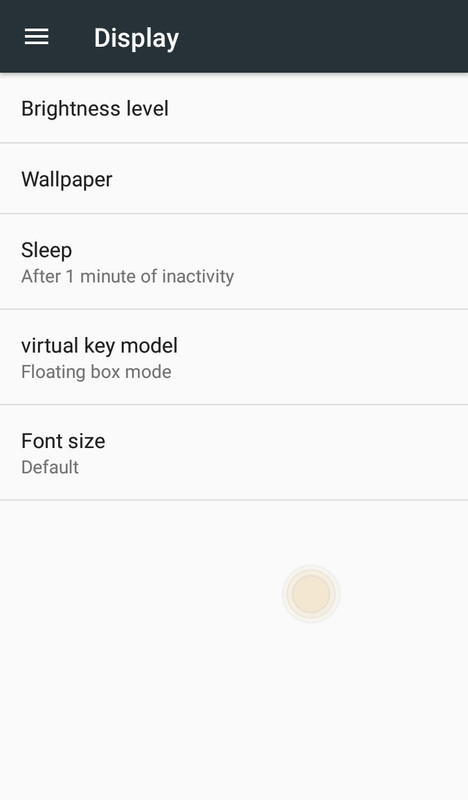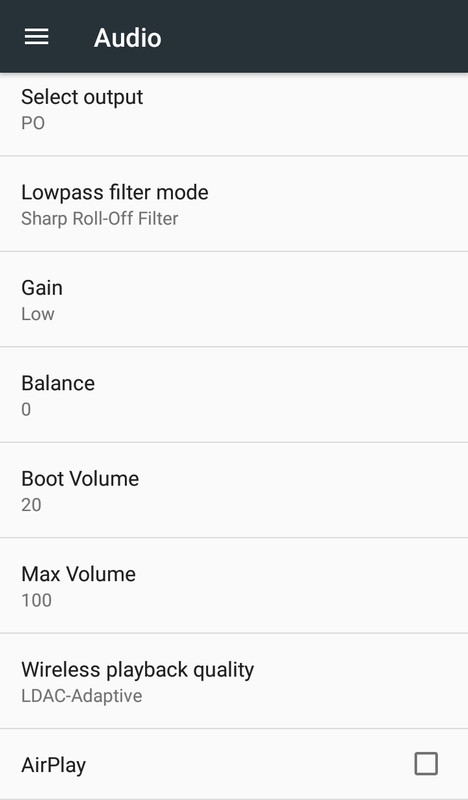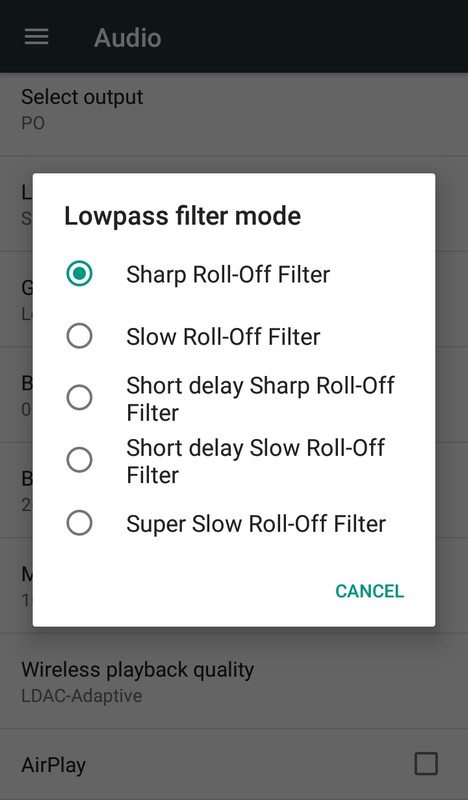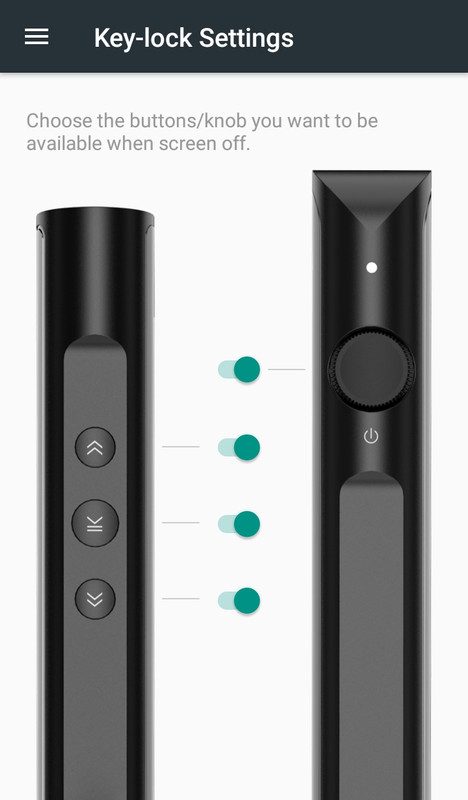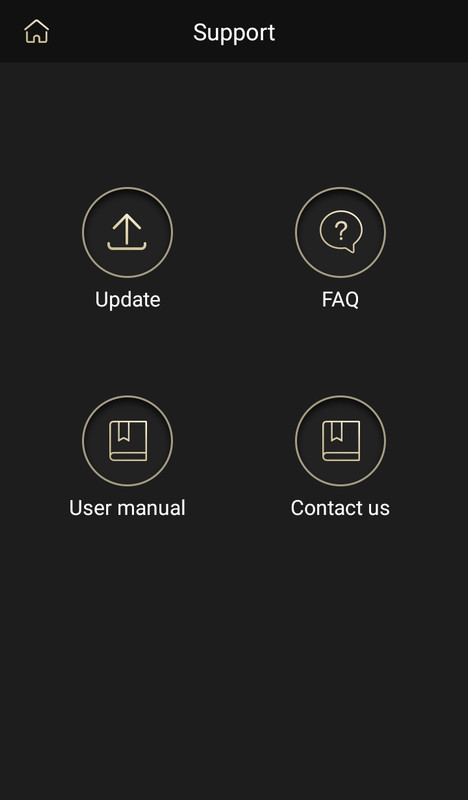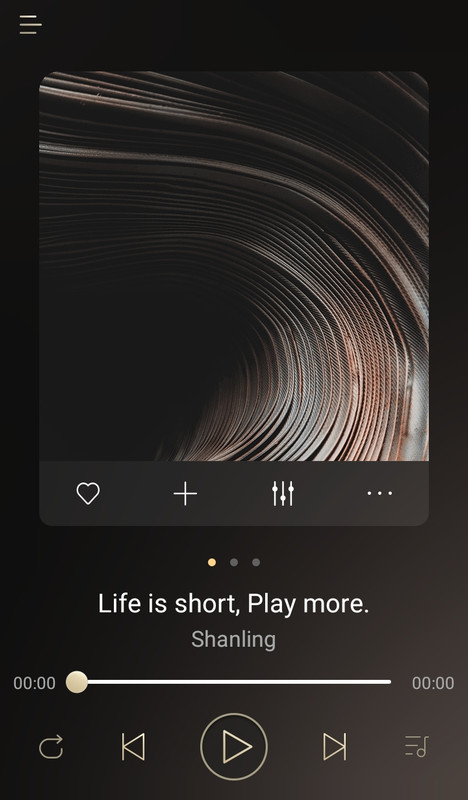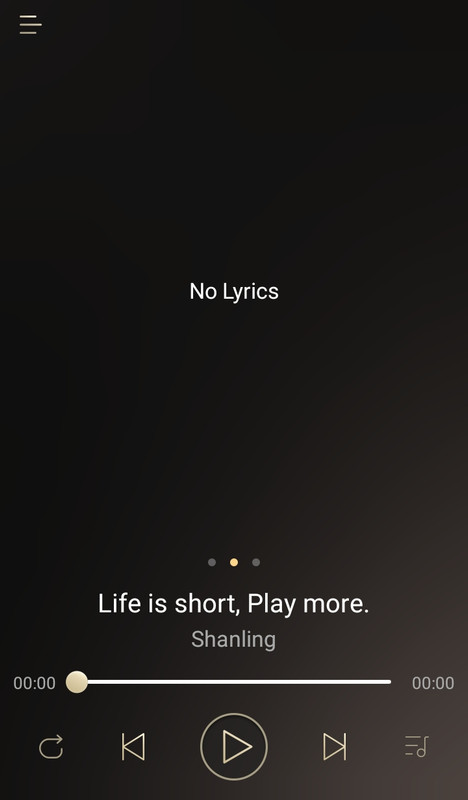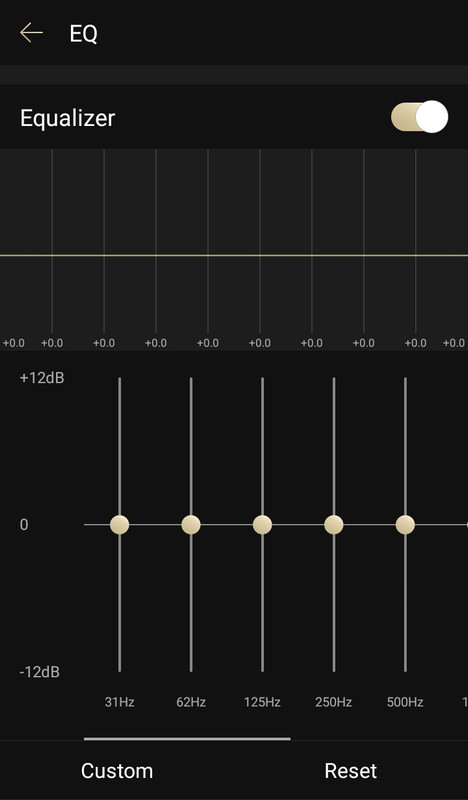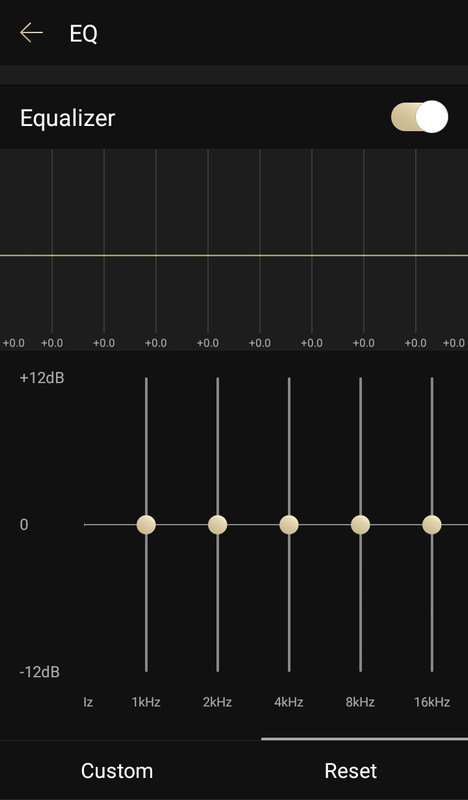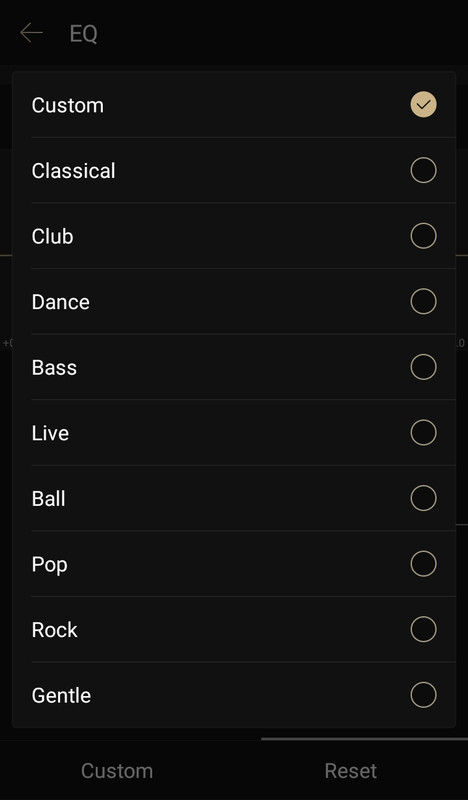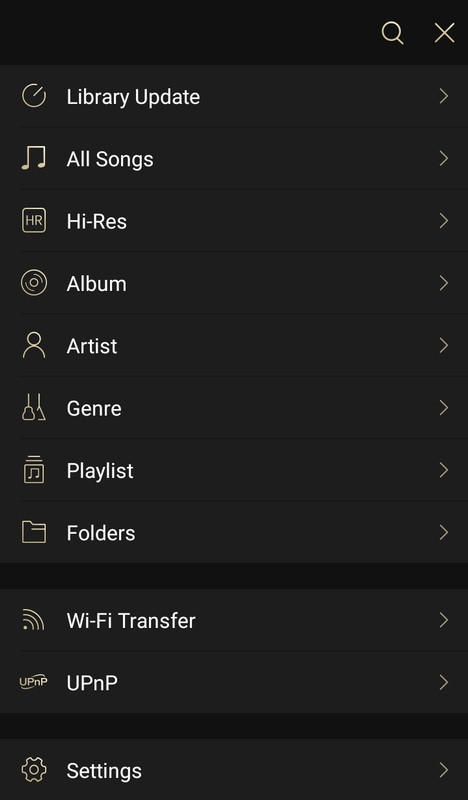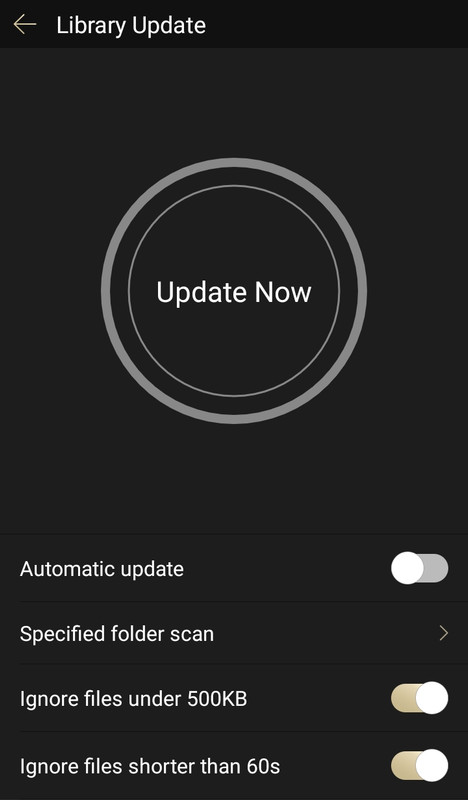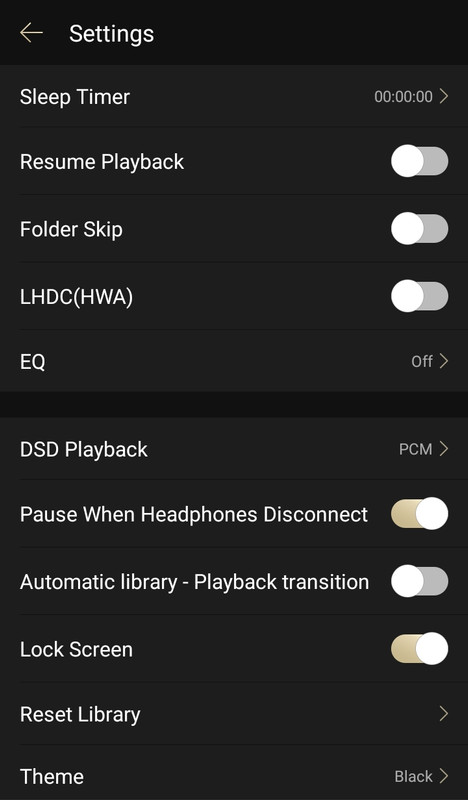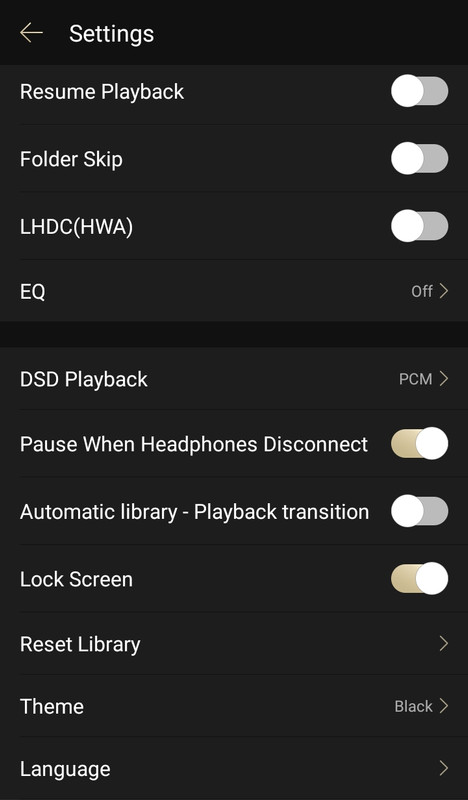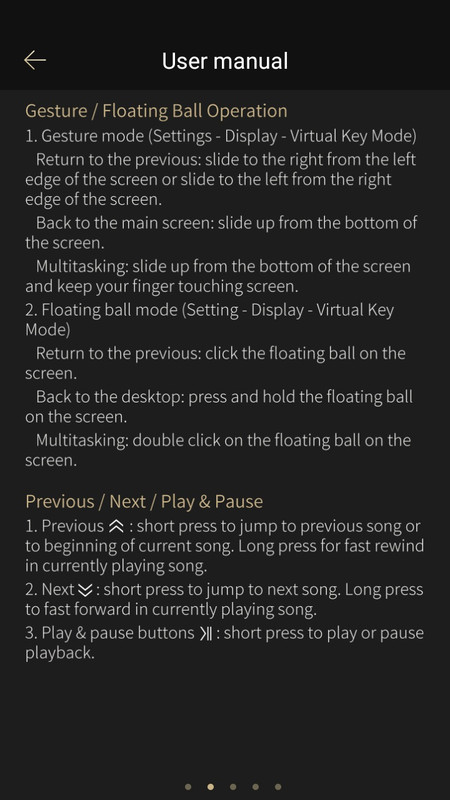REVIEW – Shanling M6 – Music Portable Player
 Website – Shanling
Website – Shanling

Shanling M6 product page
Price: Discontinued.

The M6 arrives in a different box than the usual Shanling line. Instead of the simpler white box, the outer box is larger with a dark grey shiny metallic finish and dark bordeaux dual second box inside. It does give the impression of being a top product of the company. Inside, the upper layer holds the M6 player itself, and below there are a few basic accessories: the USB Type-C cable and a pair of protective screen films which seem to fit the back glass panel as well. Unfortunately, there is no case included, a disadvantage considering that other companies offer include at least a simple TPU case for their mid-fi players. The leather like case can be purchased separately, and it may be recommended considering the fine glass and metal parts of the device.

The Shanling M6 maintains the unique design of previous Shanling players. It is a sleek, eye-catching and seamless design, but more importantly, well built. If the small M0 was one of cutest DAP and most minimalistic ones, then the M6 is one of the best in build quality, and maybe the best I’ve tried so far. The shape and outer design is practically identical to the M5s, just larger in all dimensions and adds extra weight, but it looks much more solid and durable. The main chassis is made of thick CNC machined aluminum, anodized and finely polished. It consists in a whole single metal piece with glass on both front and back sides, completely smooth with no sharp corners, rounded edges and curved sides.

Being the first Android based DAP from the company, the M6 finally carries a higher quality screen, which now occupies most of the front panel, though there still are two blank unused edges on both top and bottom sides of the panel. As such the M6 is a large device. Next to other players, the M6 is even longer than the iBasso DX220 and just a bit more than the FiiO M11, but more narrow in width and less thick. In contrast, the Fiio and iBasso (including the DX160) take full advantage of the large panel using 5” screens that occupies the whole front panel. Weight is above 200g what can be considered about standard for full Android OS DAPs now. Color choice is for now limited to only black color but it looks very nice, nonetheless.

The layout, too, follows the usual Shanling formula, simple and well organized in controls and connections. On the left side there are the three physical playback buttons, rewind/previous, play/pause and next – if pressed and held, the previous and next buttons can be used for back and fast-forward on the current playing track, even when the screen is off. Like on the M5s, the buttons’ line is recessed within the player contour what avoids them from being unwillingly pressed, while each button is very slightly raised and has a good grip easy to use without looking at the player. Below the buttons, at the lower half there is the usual micro SD card slot hidden by the small plastic cover. Used with a Samsung EVO 128GB and zero issues with reading and speed.

On the right side, there is only the multifunctional wheel that works for volume adjustment when rotated clockwise/counter-clockwise and also as power and screen on and off button. Same wheel introduced with the M0 and followed on the M5s players, made of the aluminum material. The only difference is that it doesn’t stick out of the lateral side. Each of the controls can set to be locked while screen is off under the settings options. As for the volume control it has been noticeable improved from previous models. It is very accurate without skipping volume steps, just one on each rotation click. As always, volume changes are small from each step so can be perfectly adjusted for most sensitive IEM sets.

At the bottom there are all the audio and digital connections. Analog audio outputs are the standard single 3.5mm and for balanced output Shanling now offers both 2.5mm and 4.4mm for a more universal and competitive device. They can also be set to work as Line-Out ports from the audio settings menu or directly from the quick upper drop menu icon. Be aware that the volume might be set to maximum; there will always a confirmation message before switching to LO mode. To the left corner there is the USB Type-C port for the charging and data management, and of course, for digital audio functions as both a source and external DAC (
extra drivers may be needed). From the wireless settings the M6 can work as wireless Amp/DAC as well.

The screen is finally of higher quality. A full Sharp HD IPS touch screen of 4.7” size and 720×1280 resolution. Still not the largest but yes of good quality with sharp and vivid colors, good view angle and enough brightness. The glass panel on both front and back is curved perfectly fitting the right and left sides.
There is no screen rotation option under the settings yet, though should work with an appropriate video playback app.


Hardware inside has updated to an AKM dual AK4495SEQ audio DAC offering a variety of digital filters. Processor SoC is a fine Qualcomm Snapdragon 430 CPU of an octa-core chip and 4G RAM making it indeed a fast Android based portable device. Also the M6 now packs a 32GB ROM memory, though only about 24GB is available for real use. It runs quite fast and very smooth.
User Interface & Software
The M6 runs under Android 7 (7.1.1), which for a player announced and released by end 2019, early 2020, it is certainly quite outdated (same could be said about the Fiio M11 Pro and even M15!). Currently the only downside of the M6. Fortunately Shanling have plans of upgrading to Android 9, matching the new Sony DAPs. The good thing is that the M6, International version, arrives with pre-installed Google Play. From other Shanling players I tried, they were simple and easy to use, and now with Android OS it is even more comfortable as any smart device with the needed audio options added to the system. Everything works fast and smooth. Touch screen response is very good too.
Upon powering off it starts at the home screen with a small display to access the Shanling music app right away or alternatively handle the music playback directly from this main screen. There is a second screen to the left few basic apps. At the bottom of the screen there are four extra icons: clock (time settings), Shanling music app, settings and info (including firmware update and manual).
I mainly used the M6 with 2.8 and earlier FW for the review. There is an extra feature called ‘virtual key model’ that allows two different gesture navigation options. Now it is has been recently updated to 3.0 which adds an extra feature to switch between Android mode and Prime mode. Basically it sets the player to work only with the Shanling Music app with no access to the main Android system.
As for the Shanling music app itself it is pretty simple to use. There is a wide array of EQ presets and a Custom EQ with 10 frequency bands to adjust from 31Hz up to 16kHz in a range of 12dB+/-. It is not very complete as Folder skip is available, but haven’t seen Gapless playback option yet.




As most DAPs, the M6 still uses Bluetooth 4.2 version. 5.0 could have been more positive to get these days, however, from the recent Shanling Q1 the Bluetooth quality proved to be very good with quite a decent signal range, and has nothing to lose next to other few BT 5.0 DAPs and actually the M6 is still among the best, similar to the Q1. Supported codes include the AptX/AptX HD, LDAC and even HWA. Of course, Two-Way Bluetooth is supported, so it functions as both a transmitter and receiver making a fully balanced wireless Amp/DAC. Wi-Fi support is for dual band 2.4/5GHz, the standard for portable devices. Works fine well with home internet servers for both web browsing and playing video or music online.
Usually, I prefer not to use True Wireless earphones that have integrated volume controls with Android DAPs due the lack of accuracy as they change the volume of the player. Those with no volume work much better. For instance, the Soundcore Liberty 2 Pro pairs well with the M6 (volume controls set to off through the HearID App which allows a more accurate adjustment of the sound level). With other on-ear headphones, like the u-Jays or over-ear larger headphones as the M&D MW60 the volume level is easy to control directly from the headphones.
DAC functionality
The M6 can works as external DAC through Type-C USB port connected to either a PC or other smart devices. Tested with other Android devices and even with Shanling Q1, it USB DAC function starts immediately if the M6 Type-C port is set to function as DAC. For Windows system there is need to install extra USB driver
(download from Shanling site – Link)
. External DAC can be connected to the M6 as well.
Battery
Battery time rates up to 12hrs playback, from single-ended 3.5mm output and balanced outputs can get around ~9hrs, depending on the volume; sensitive earphones may reach a bit more. The performance is decent, standard performance around the full portable players under Android sys, just lower than what the simpler M5s and Q1 can offer. The needed Quick-charge QC 3.0 is supported as well, and will charge if used as USB DAC.
Note: Not sure if it as issue on the firmware or the specific unit here, but once the battery is fully charged the may M6 freeze and need to be powered on by holding the power/wheel button for about 12s.
Sound Quality
Earphones/Headphones: qdc Anole VX, InEar ProMission X, Hyla Sarda, Dita Fealty, iBasso IT04, Sendy Aiva, Dunu DK-3001 Pro, and more.
DAP: iBasso DX220 & DX160; Hiby R5 & R6 Pro; Shanling M5s; Fiio M11/Pro
Sound quality out of the Shanling M6 stands out for its price tag as what 'mid-tier' players can get nowadays, and in some aspects can easily compete with more expensive contenders. M6 continues to use AKM audio DAC, this time a AK4449SEQ dual DAC. The physical chip is not what makes the sound quality alone, but rather the implementation and final tuning done, and Shanling achieved very good results here no doubt. The variety of digital filters meant no real differences, and for the sake of the review the equalization was kept off.
The previous DAP flagship, the M5s, was impressive too with very strong technical characteristics and still a worth option for those not looking for an Android based player. Still a Shanling DAP in sound, the M6 also brings a rather neutral and uncolored, transparent sound presentation, but with much greater dynamics and less reserved, flat sound. Kind of dry with cool tonality, though nothing boring at all. The dryness reminds of the M5s and the more recent Q1, however, the M6 can show a more fun factor a bit like the small M0 did. There are two strong points: soundstage and detail. It does not stop there, but clearly the most obvious features to notice upon first listening out from the M6, and of course good driving power for a portable device.
The bass has great extension and reaches to the very low sub-bass with presence, rumble and precision. So far among the best sub-bass quality for portable DAP I've tried, very realistic and full textured. The low-end is not elevated nor does it have a certain warmth tonality to it, but always present and far from shy in sheer impact. It is tight, accurate and a good layering is well discerned. Mid-bass is very controlled and yet powerful enough when paired with the right gears. Dynamics are just excellent on the whole bass response with easier separation between finer lower instruments. In spite of the great definition on the low-end, the midrange is kept very clear in a most neutral way. It is pretty linear and almost too flat, with a cool tonality and pretty much no coloration to the sound. The M6 is not for a rich, thick or sweet midrange as it lacks the sense of warmth. Instead, it is very transparent. It is not lacking in body or texture. Kind of dry but very clean, airy and sharp in instruments' separation. It sounds open, highly layered and more effortless, making it easy to listen the small details and little background nuances.
The M6 is not a treble oriented source but to complete the whole balance the highs are a bit towards the bright and sharp side. Less accentuated and more linear than the DX220 or R6 Pro with their Sabre ESS based DAC, but then more natural and refined than the Cirrus Logic on the DX160 and R5. Similar to the low-end, the extension is great as well and show very good treble control and dynamics. The M6 does emphasize micro details and the sharpness and attack won’t be too forgiving with every single earphone paired with it. Still, the resolution is really good for the price.
Soundstage, too, is another immediate strength of the M6 as mid-tier DAP in width and depth giving a larger surrounding effect with clear and sharp right to left channel separation even just out from the single-ended output. It has enough power to drive more demanding gears, like the VE Zen with 320 Ohm impedance barely reaching the half of the volume level, and also plays some planar open-back headphones like the Sendy Aiva or Hifiman Sundara with no issues. Switching to sensitive IEMs the M6 presents no hiss and clean background even when not playing music. There are also no electronic noise issues when using BT or Wi-Fi connections.
The M6 now covers both balanced outputs of 2.5mm and 4.4mm saving the use of adapters or exchange of cables. Differences from the regular 3.5mm output to the balanced options is the usual deal mainly having a higher driving power for more demanding gears, but still noticeable on sensitive earphones. If available, and battery time is fine, then you get an even wider, more expansive and open presentation, better separation and clearer midrange and sound overall. It is not ‘more detailed’ but yes greater in pure dynamics and a gain in extension and even finer layering.
Comparisons:
iBasso DX160
In the mid-tier range the M6 is an obvious contender to the DX160. The DX160 arrives with Android 8.1 OS and now can have Goggle Play added. It has also 5.0 BT and larger 5” screen occupying the whole front panel, and practically looks more like a smartphone than to a music player at first glance. It is also a bit lighter and thinner making it easier to carry around. The M6 on the other hand, is tougher built with a thicker metal chassis, longer and thicker in dimensions, but does look more unique and elegant. M6 may have old Android 7, but runs noticeable faster and smoother with its Snapdragon chip over the Rockchip of the DX160. Bluetooth too, it may be 4.2v, but has no issues as the DX160 may present (on reported units) in wireless range. Also, there is no noise when using Wi-Fi connections either. Volume control is very good on both; the volume knob is very accurate and comfortable to adjust with most sensitive IEMs.
In terms of sound, the DX160 was tuned to achieve a similar presentation as the DX220, and as such differs to the M6. The DX160 has a thicker sound overall, a warmer tonality with greater mid-bass emphasis, richer, fuller midrange and more laid-back but less controlled treble (still not a fan of these Cirrus DAC treble). M6 is just faster and has much better dynamics. Better extension and effortless sub-bass reach. Midrange is cleaner, dry but more detailed and transparent. Treble is brighter and sharper on the M6, but it has more quality, definition and extends further in the upper freq. The DX160 has very good soundstage, tuned very close to the DX220 flagship, though the M6 excels over the M6 rivaling directly the DX220.

The R5 uses the same Cirrus DAC chip as the DX160, and while they share some similarities in audio performance they still have bit different tuning, but versus the M6 then R5 and DX160 are much closer to each other. The Hiby R5 has less mid-bass impact than the DX160 but still more than the M6, and despite having a more even sub to mid-bass response, the M6 hits with more impact and rumble, greater extension and layering in the sub-bass, and faster on the whole low-end. The R5 can sound darker next to the M6; R5 has a smoother yet dry midrange, while the M6 is cleaner and more open. R5 has the less treble quantity and quality among the three, and also has a more average soundstage.



As for the other aspects. Well, the M11 still has two Micro SD slots, which are already missing on the ‘Pro’. Same old Android 7 OS on the three of them (really hoping to see 9.0 on the Shanling line soon). Google Store is now available on the Fiio as well, and all have Bluetooth 4.2; iBasso are the only ones to go with 5.0, though DX160 has some limited range on BT signal (with some units). The system response is among the fastest on both Shanling and Fiio, and they feature the ‘gesture control’ for easier navigation. Lastly, the Fiio M11s have sharp rectangular form factor while the Shanling is completely smooth and well rounded.
Shanling M5s
Previous Shanling flagship player, also implementing a AKM chip, dual AK4493 DAC, with a 2.5mm balanced output and the Shanling own MTouch OS. More compact with a smaller touch screen of simpler quality. Battery time is still better on the M5s, but the response is nothing as accurate and smooth as the M6 being Android based.
As for the sound quality, in a way the M6 can be considered 'better' than the M5s, but it is not a direct upgrade. The M5s is more neutral and linear. Darker next to the M6. Bass is more reserved, less extended and flat. A bit more midrange-forward yet in very neutral uncolored if a kid of dry presentation. Soundstage is less expansive, more similar to the M11. The M6 is just more lively, dynamic and faster. Wider and more open sounding, but also more revealing. The M6 is also even more transparent through the midrange with a cleaner timbre.

Keeping all the switches off on the qdc VX, there is already sufficient amount of bass, quite realistic in texture, reach sub-bass rumble with a punchy yet fairly neutral mid-bass. Midrange is not particularly forward, not distant either, but yes spacious and airy. Treble is very clean with a clear upper extension. Impressive imaging and dynamics. More width than depth or height. Well noticed channel separation, and slight sense of warmth overall.

The DK-3001 Pro is not very source dependent. Even so, with the M6 it has a bit less mid-centered signature, with a more even lows and highs. Not much of extra body in the bass, but yes a more sub-bass presence. Treble on the DK3001 Pro is among the best and well natural textured and sounds very clean out of the M6. Still limited in stage dimensions.

As mentioned on previous reviews, among the various portable players, I found the Aiva to have a more favorable synergy with the DX160. With Shanling M6 it also reaches a same favorable sound quality, the results are however different. Here the Aiva gain more speed, sub-bass texture and rumble, but less mid-bass body as with the DX160. Midrange is leaner but more clear, articulated and accurate. Treble control is very good considering the bright nature of the Aiva, and so far the least aggressive out of portable DAP, and it sounds just very airy. Still, they are second to the more epic performance the Aiva gets when matched with the Oriolus BA300s balanced amplifier but that means extra costs.

The RE2000 can be highly dependent on the tips used and still be peaky on the treble with different sources. On the M6 it is still noticeable, but very well taken under control and well balanced in overall signature. Wider soundstage, solid bass response, very slightly over neutral and very good dynamics and speed.

There have been many portable players from Shanling, each targeting a specific price range and tastes. While they may have took their time to release their first full Android based portable player, the M6 practically packs everything needed as mid-fi DAP. Impressive build quality and nice design, a quality touch screen, a very fast processor and stable OS with the freedom to add any optional app and wireless connections. The main disadvantage lies on the outdated OS being Android 7 against 8 or even 9 version used by the competition, which might be upgraded in the future. It includes both popular balanced outputs for more convenient portable use. And most importantly, an excellent sound quality with driving power, very clear and detailed sound, good extension, soundstage and dynamics. A very complete audio device that well matches its price tag and rivals even more expensive options.







